Titan submersible: An X-box gaming style controller and no regulatory approval among crucial mistakes
As rescue teams race against the clock to locate the missing Titan submarine, details have emerged about the vessel’s blunders. See what they are.
World
Don't miss out on the headlines from World. Followed categories will be added to My News.
A series of problems and mistakes were overlooked before the Titan submarine went missing in the Atlantic Ocean on its way to view the remains of the Titanic.
As rescue teams race against the clock to locate the lost vessel, it can be revealed the subs operator had a relaxed attitude towards safety.
OceanGate CEO Stockton Rush, one of the men on board the missing vessel, said there should be “limits” to safety precautions. “You know, at some point, safety is just a pure waste,” he told CBS last year.
“I mean, if you just want to be safe, don’t get out of bed, don’t get in your car, don’t do anything. At some point, you’re going to take some risk, and it really is a risk-reward question. “I think I can do this just as safely while breaking the rules.”
The issue of safety also landed OceanGate in a pricey lawsuit. A former staffer, David Lochridge, claimed he was fired after he raised concerns and asked for stricter safety checks.
In court documents seen by The Sun, he complained the vessel was not capable of descending to extreme depths necessary to view the Titanic wreckage. OceanGate sued Lochridge for disclosing confidential information. In turn, Lochridge counter-sued saying he was wrongfully fired from his role. The case was settled out of court in November 2018. A former Titan passenger has also emerged to reveal the Titan was “lost” because of bad weather last year.
CBS Sunday Morning journalist David Pogue said he missed the chance to see the Titanic after the sub lost communication with the surface ship. “There’s no GPS underwater, so the surface ship is supposed to guide the ship to the shipwreck by sending text messages,” Pogue said in a resurfaced video.
“But on this dive, communication somehow broke down. The sub never found the wreck.”
Bizarre footage from inside the Titan shows the vessel is run by an X-box style gaming controller and is mainly operated by using one button. Pogue told the BBC: “You steer this sub with an Xbox game controller (and) some of the ballast is (built from) abandoned construction pipes.”
The reporter also revealed the vessel was not carrying a distress beacon, which when activated alerts a worldwide Search and Rescue network to send rescuers to the location straight away.
“This submersible does not have any kind of beacon like that,” Pogue said. “On my expedition last summer they did indeed get lost and adding such a beacon was discussed.” Other passengers have spoken about radio failures and flickering lights. Mike Reiss, who works on The Simpsons show, was a passenger on Titan last year and said he experienced communication failures. “I have taken three different dives with this company, one at the Titanic and two others and you almost always lost communication — and you are at the mercy of weather,” he said.Significantly, OceanGate has previously said that Titan “had not been approved by any regulatory body”. Tourists sign a contract before boarding in which they acknowledge the submarine is “an experimental vessel”. The contract also states that their trip “could result in physical injury, disability, emotional trauma or death”.
CRITICAL EQUIPMENT ARRIVES
As the deadline for remaining oxygen fast approached, the US Air Force flew three massive C-17 Globemaster cargo planes full of critical equipment bound for the search area for the missing Titanic tourist submarine.
In what has been described as the “last chance” to save the five people aboard the OceanGate Expeditions’ Titan submersible, the three mammoth aircraft reportedly arrived at St John’s Airport, Newfoundland, from bases in New Jersey and North Carolina. The cargo was frantically loaded on to flatbed trucks, which raced under police escort to be loaded onto the Canadian supply ship, Horizon Arctic late Tuesday before the ship’s 15-hour push to the search area, according to the UK’s Metro. “This is the last kick at it. This is the last chance. There’s no other chance other than this ROV (underwater vehicle),” said a man at the dock who claimed he would be part of the Horizon Arctic crew, the Daily Mail reported. “I’m hoping for the best. I’m really, really hoping. It will be a tragedy for everyone if this is not found. A tragedy on top of a tragedy,” he added. Equipment said to have arrived in time for the last push includes two heavy-duty winches, potentially useful to haul material from the sea floor to the surface
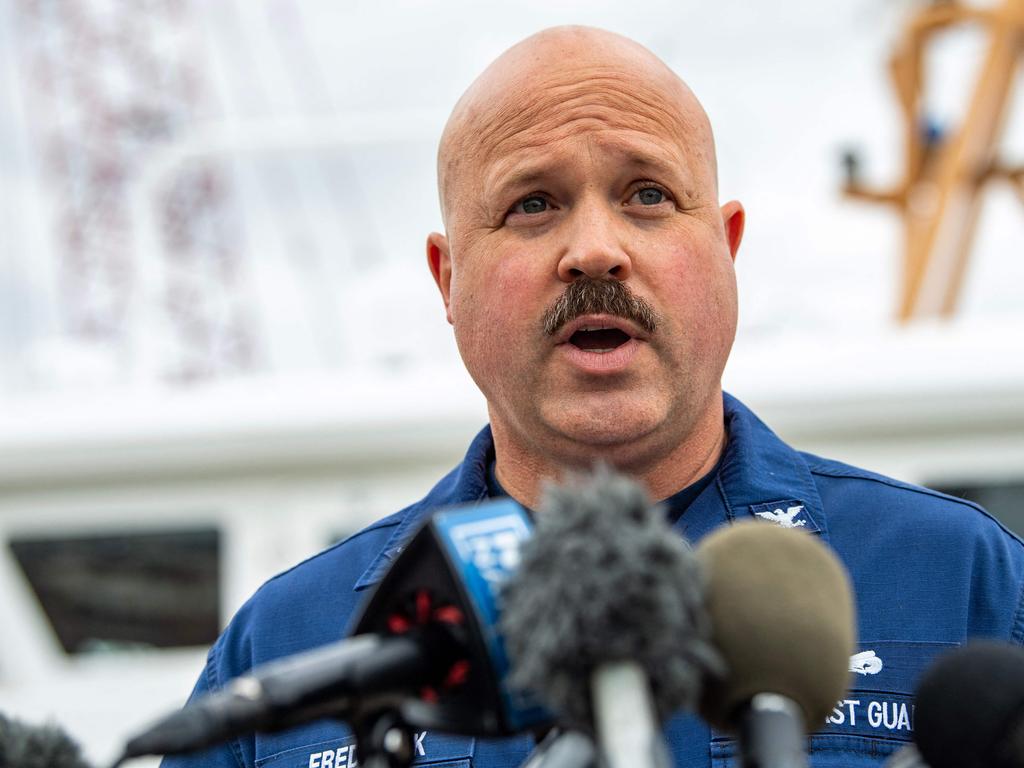
As the Horizon Arctic was being loaded late Tuesday, US Coast Guard Captain Jamie Frederick was asked if the Horizon Arctic will arrive in time to assist in the search and rescue efforts.
“I don’t know the answer to that question. What I will tell you is that we will do everything in our power to effect a rescue,” he said. “This is a complex search, and it’s complex for a variety of reasons. Logistically speaking, it’s hard to bring assets to bear. It takes time. It takes co-ordination.” Also loaded on the Horizon Arctic was a giant roll of thick cable and large machines with “high voltage” warning labels, as well as deep-sea rescue equipment from Pelagic Research Services.
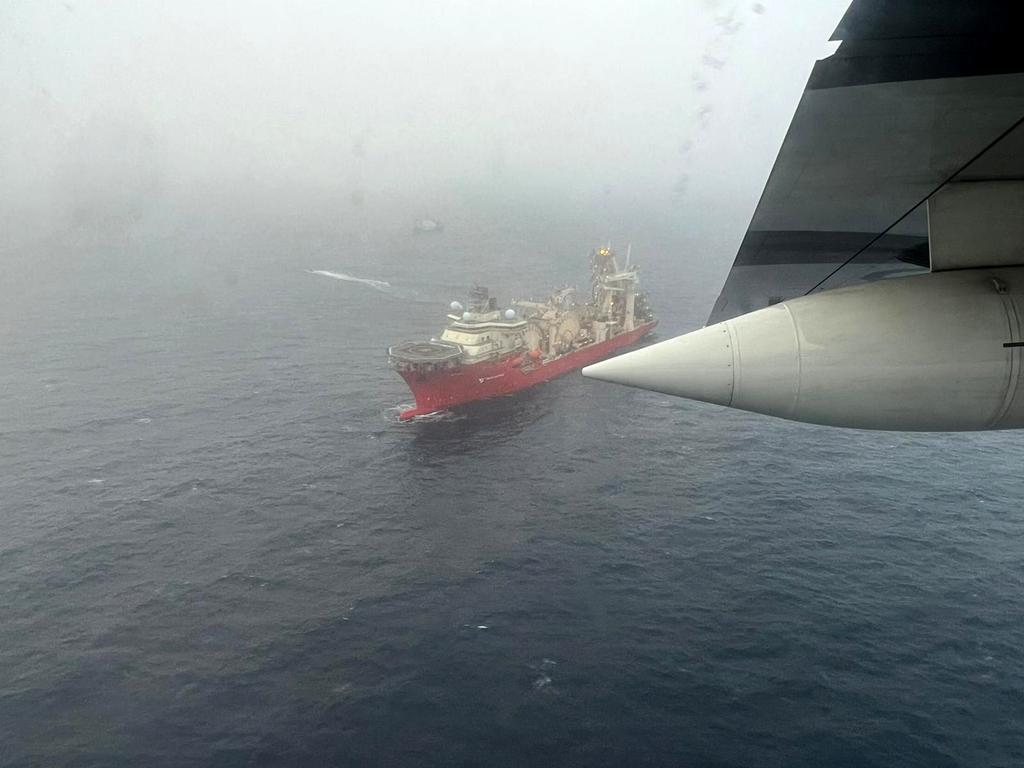
“Pelagic Research Services (PRS) has been contacted by OceanGate Expeditions to provide critical support in the current rescue operation of the submersible Titan in the North Atlantic,” the company said in a statement.
“Currently, PRS is in the process of mobilisation as quickly and as safely as possible to assist in the search and rescue effort.” WGRZ reported that a Newfoundland airport official confirmed the arrival of a 7-foot-long PRS submersible called Odysseus 6K, which is said to have dive depths of 19,000 feet. Rescue efforts have so far been hindered by the depth of the Titanic wreckage, which likes about 12,500 feet below the surface.
‘OUTER SPACE’ MISSION FACES MEDICS
Medical specialists will have their work cut out for them in planning and executing a rescue of the five people trapped inside the OceanGate’s Titan sub, which went missing under the Atlantic Ocean on Sunday, an expert has revealed.
The submersible was understood to have four days of oxygen on-board but as of Wednesday evening, that emergency supply likely only has about 24 hours remaining.
There is hope for the tourists on board Titan, with reports of “underwater noises” and “banging” sounds at 30-minute intervals detected by search crews. A Royal Canadian navy ship carrying a medical team specialising in dive medicine and a six-person mobile hyperbaric recompression chamber was en route to the search area today.The medical process is unfathomable, according to emergency medicine expert David Caldicott, who likened the rescue to something in “outer space”.“I understand the working environment a bit but I can’t tell you how hard this would be. It’s certainly not an environment in which humans were ever designed to survive for any period of time at all,” said Associate Professor Caldicott, of the University of Canberra and Calvary Hospital Emergency Department. He said this was unlike any emergency situation medics would have experienced before, and vastly different to the complex rescue of the young soccer team from the Thailand flooded caves in 2018.
“The Titanic is 3.8km below the surface, and the pressure is nearly 400 times that of the surface. That is several orders of magnitude greater than the pressure required to pop a champagne cork back into its bottle. It’s not even shallow enough for most submarines,” he said.
“The closest parallel to this environment in terms of mounting a rescue isn’t really on our planet – it’s probably outer space.
“You will recall the difficulty that the Russians had in rescuing an assumed 23 initially surviving personnel in the Kursk submarine disaster in 2000 – that was at 108 metres.
“The successful rescue of any of the Titan’s occupants would probably represent one of the most impressive rescue missions ever mounted, if it were to be successful.”
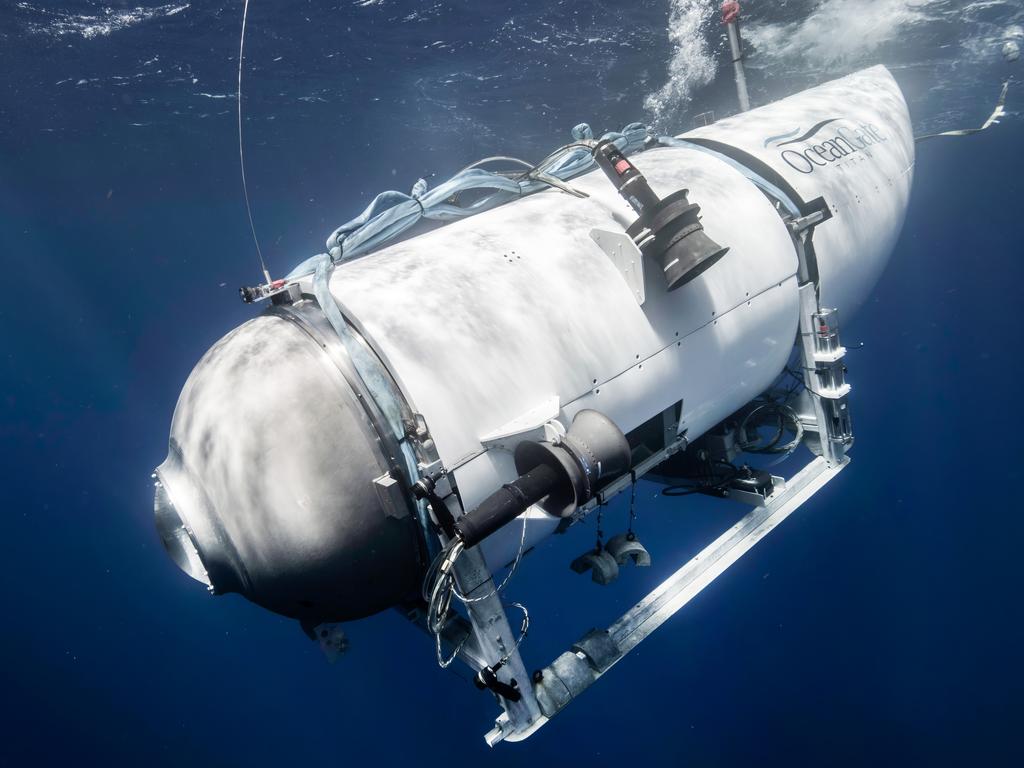
FEARS TITANIC CURSE MAY STRIKE AGAIN
The Titanic was only found in 1985, ironically as a Cold War ruse for the US navy to really survey two nuclear-powered submarine wrecks lost in the Atlantic in the 1960s.
The loss of the Titanic on April 15, 1912, has spawned countless myths and theories largely because of the huge loss of life of 1500 passengers and crew.
And because its whereabouts could not be confirmed for decades.
There are fears history may be repeating itself with five people missing on-board a submersible touring the famous ship’s wreckage.
The sub lost contact with its support vessel just shy of two hours after it submerged on Sunday morning (local time).
A rescue mission is under way for the sub, Titan, which is believed to have a four-day emergency oxygen supply on board.
Popular culture stories began from the moment Carpathia, the ship that rescued many Titanic survivors, sailed into New York Harbor and was dubbed the “ship of widows”.
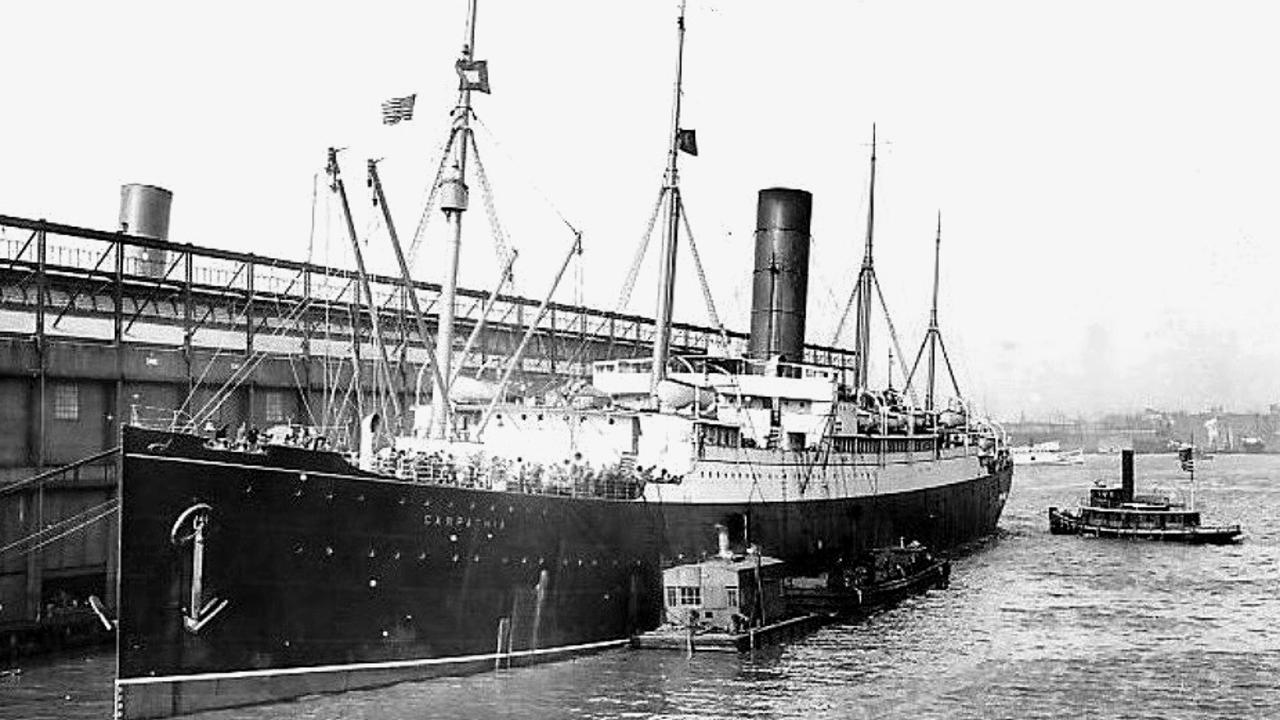
Many could not believe the Titanic could sink and for decades many of its survivors talked of a curse that permanently haunted them. Some spoke of constant bad luck throughout their lives, including unrelated drownings of next generation relatives.
But most just lived sad lives, traumatised by the tragedy before PTSD had a name and, in part, due to poverty as many had carried with them their life savings which went down with the ship.
It seemed incredible the final resting place of one of the biggest accidents in maritime history remained unknown for generations.
Several quests were made to find her but their failure only fuelled conspiracies it never sank at all and in its place was just an inferior ship, White Line’s Titanic sister ship the Olympic, as part of an insurance scam.
In 1977 Dr Robert Ballard and his team of oceanographers set out to search for the Titanic but failed to find the wreck, with the vessel known to have drifted considerably as it sank.
Ballard’s second search began in the 1980s when he asked the US navy to fund the development of new technology, an unmanned camera sled that could be towed underwater at a depth of 20,000 feet.
The navy agreed to fund the development of the robot called Argo but couldn’t justify it for a Titanic search, and instead suggested it survey the wrecks of USS Thresher and USS Scorpion, two nuclear submarines that sank in the Atlantic in the late 1960s with all hands lost.
It was the Cold War and the real 1984 Argo mission was kept top secret and would not be revealed until declassified in the 2000s.
Both submarine wreck sites were tracked and comprehensively photographed for later analysis, and the USN gave Ballard only 12 days left for the funded mission to search for the Titanic.
It seemed incredible the final resting place of one of the biggest accidents in maritime history remained unknown for generations.
Several quests were made to find her but their failure only fuelled conspiracies it never sank at all and in its place was just an inferior ship, White Line’s Titanic sister ship the Olympic, as part of an insurance scam.
In 1977 Dr Robert Ballard and his team of oceanographers set out to search for the Titanic but failed to find the wreck, with the vessel known to have drifted considerably as it sank.
Ballard’s second search began in the 1980s when he asked the US navy to fund the development of new technology, an unmanned camera sled that could be towed underwater at a depth of 20,000 feet.
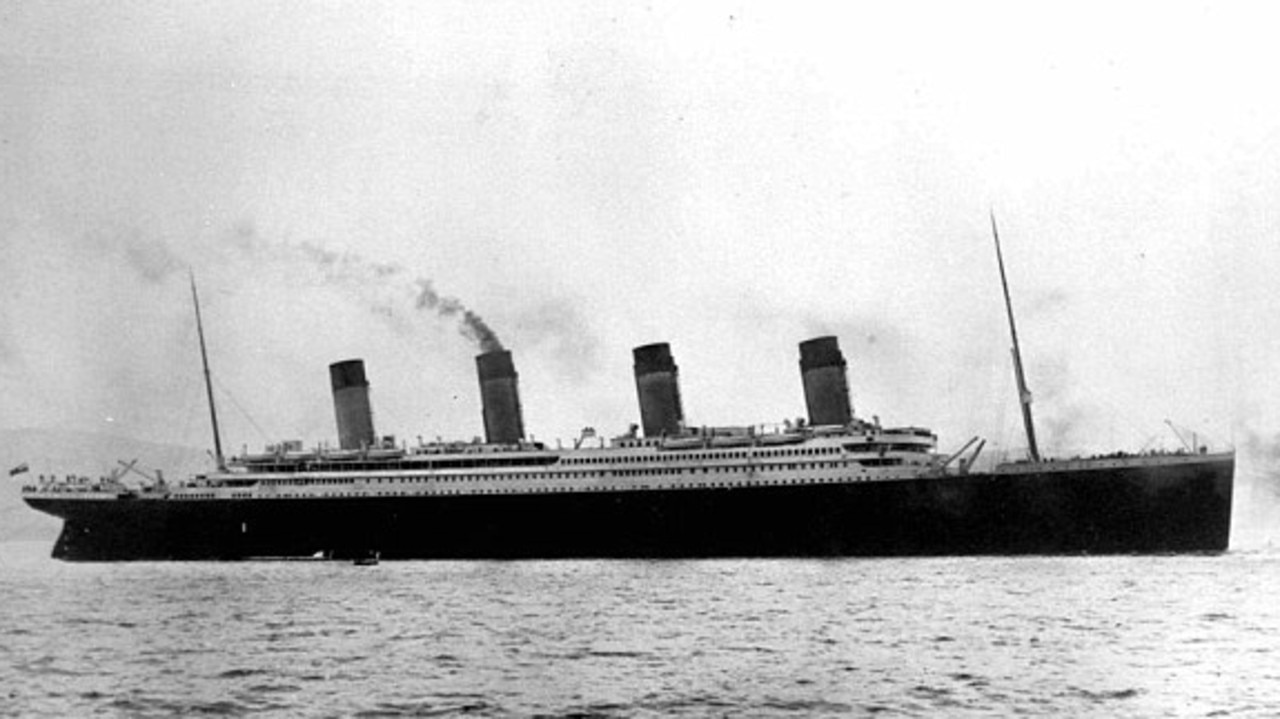
The navy agreed to fund the development of the robot called Argo but couldn’t justify it for a Titanic search, and instead suggested it survey the wrecks of USS Thresher and USS Scorpion, two nuclear submarines that sank in the Atlantic in the late 1960s with all hands lost.
It was the Cold War and the real 1984 Argo mission was kept top secret and would not be revealed until declassified in the 2000s.
Both submarine wreck sites were tracked and comprehensively photographed for later analysis, and the USN gave Ballard only 12 days left for the funded mission to search for the Titanic.
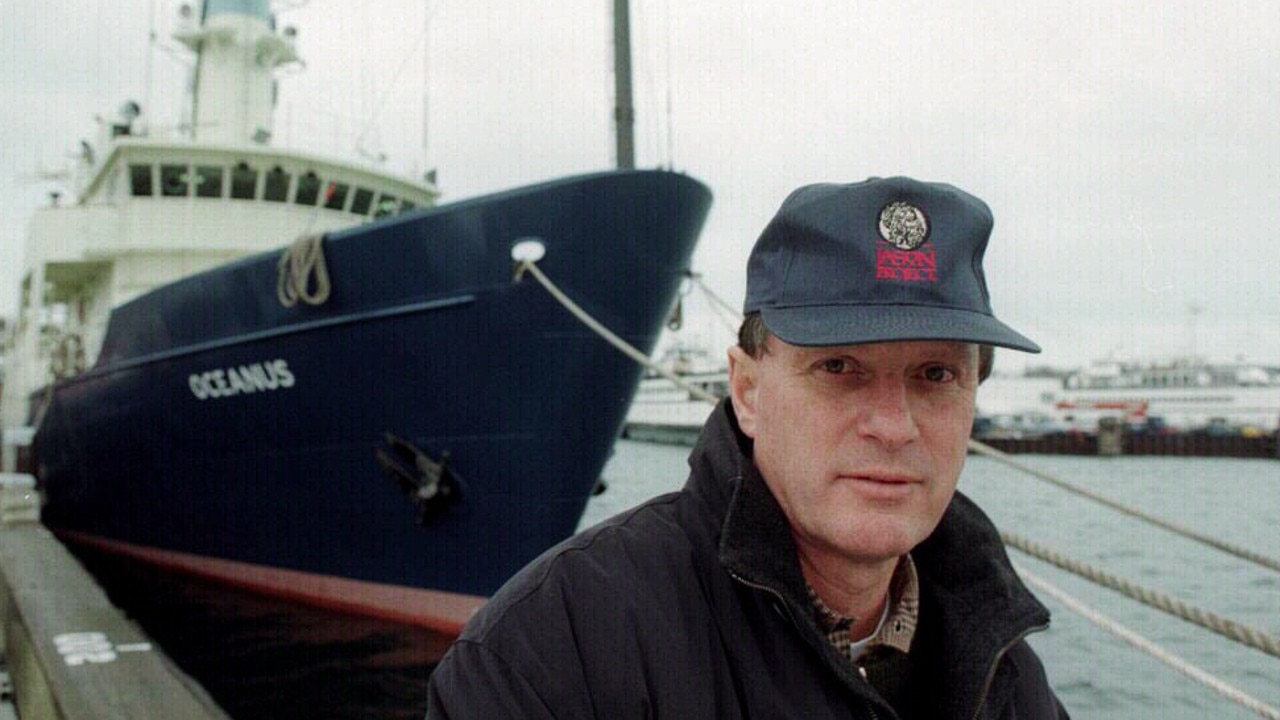
On September 1, 1985, the Argo was dragged along the ocean floor and came across a distinct ship’s boiler and riveted plates and, later, the ship. The shock find prompted the crew to cheer and open a bottle of champagne before it was noted the time was 2.20am – the exact time the Titanic had sunk. Ballard recalled his own personal horror at the celebration effectively over the grave of others.
“It was one thing to have won, to have found the ship,” he later wrote. “It was another thing to be there. That was the spooky part. I could see the Titanic as she slipped nose first into the glassy water. Around me were the ghostly shapes of the lifeboats and the piercing shouts and screams of people freezing to death in the water.”
MANY LOST TO DEPTHS OF SEA
Submarine disasters have claimed the lives of hundreds of sailors over the years, with many lost to the depths of the sea.
Take a look at some of the worst submarine disasters in our history and more recent incidents.
USS Thresher sank in 1963
The USS Thresher sank on April 10, 1963, killing all 129 men on-board – the highest submarine death toll in history. It sank during deep-diving tests southeast of Cape Cod, of the US’ northeast coast. A navy inquiry found that a piping failure was the likely cause of the incident. It’s engine room flooded as a result and it imploded.
Russian submarine Kursk sank in 2000
Two massive explosions are believed to have caused Russian Kursk submarine to sink in the Barents Sea on August 12, 2000, killing 118 sailors.

It is unclear what caused the explosions but one torpedo is thought to have detonated on-board, triggering a second explosion of several warheads just minutes later.
Chinese submarine crew dies 2003
The entire 70-member crew aboard the Ming-class submarine 361 suffocated to death after a mechanical malfunction in early May, 2003.
The vessel was towed back to shore but the Chinese government remained tight-lipped about how the crew died. There have been reports that the crew may have suffocated from a lack of oxygen.
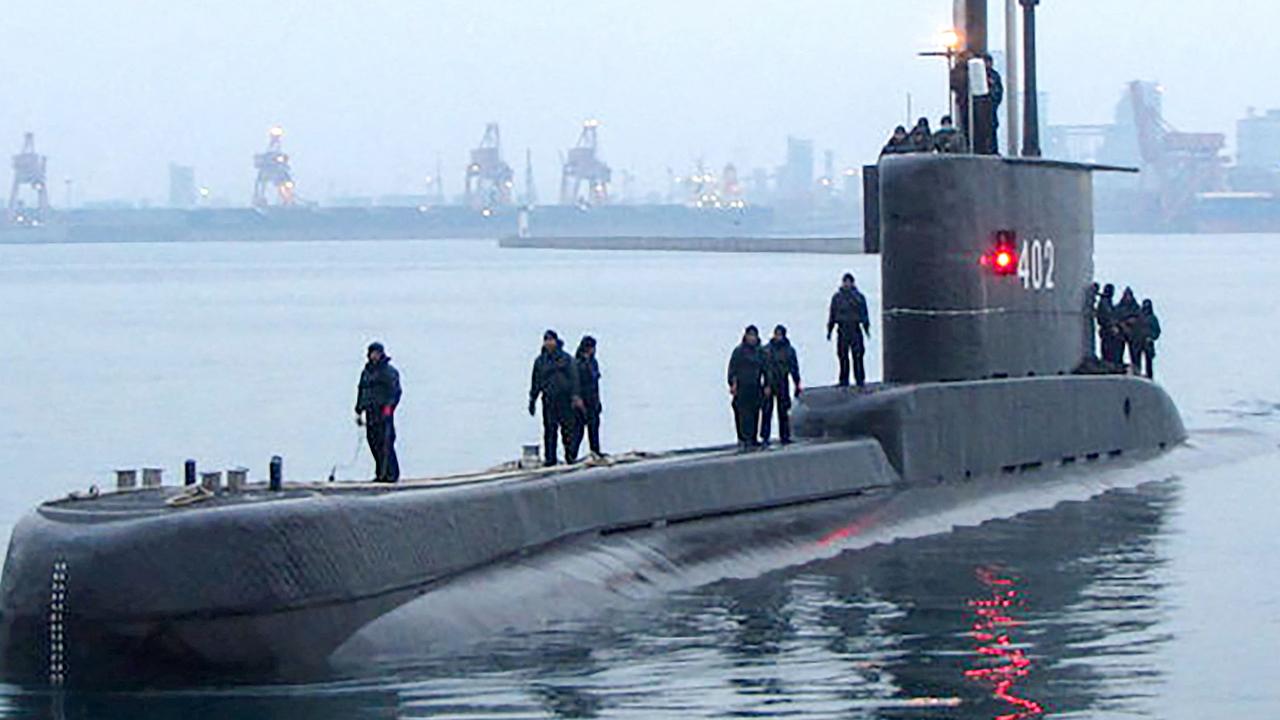
Argentine submarine sank in 2017
On November 15, 2017, the Argentine navy submarine ARA San Juan was reported missing 430km off the country’s east coast. A search and rescue mission, involving several nations, including the US and UK, was carried out for two weeks but abandoned on November 30.
A year later, the wreckage was found 460km southeast of the Comodoro Rivadavia at a depth of 800 metres. The submarine had imploded and all 44 crew members died.
The submarine had been on its way to the Mel de Plata naval base after reports of a “short circuit” issue with the batteries.
Indonesian submarine KRI Nanggala sank in 2021
Fifty-three crew died on board the Indonesian navy submarine KRI Nanggala when it went missing 95km north of Bali on April 21, 2021.
The vessel failed to report for a briefing after a torpedo live fire exercise in the Bali Sea. Other nations, including Australia, were called on to help with the search and rescue mission.
It was found at a depth of 840 metres below sea level, broken into three parts.
More Coverage
Originally published as Titan submersible: An X-box gaming style controller and no regulatory approval among crucial mistakes








